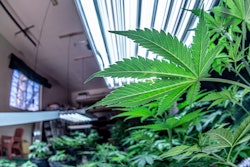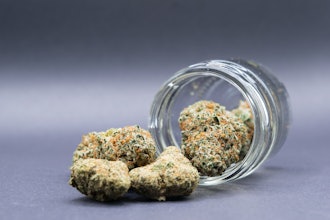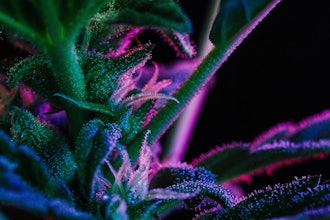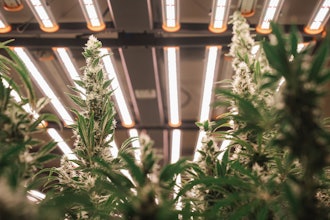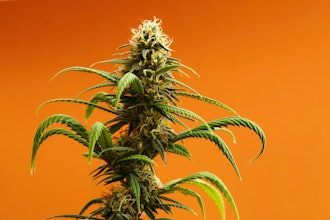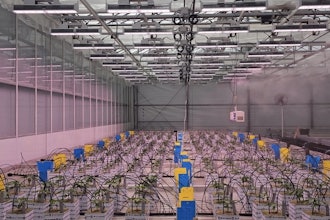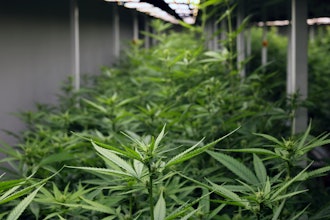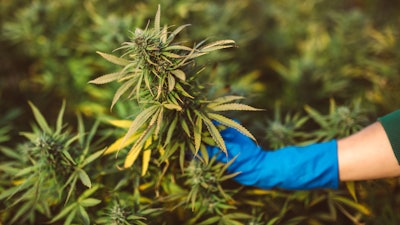
The cannabis and hemp industry is moving at such an alarming rate that analytical testing is struggling to keep up. It is estimated that the demand for medicinal cannabis products will exceed $25 billion in the US by 2025. However, because the US FDA has not been actively involved in the regulatory process, it has been left to individual states to ensure products are safe for human consumption.
Unfortunately, many of the states where cannabis is legal do not have the expertise to fully-understand the safety and toxicological issues regarding the production of cannabinoid products on the market today.
Besides the need to characterize its potency, it’s also important to measure heavy metals, because cannabis will avidly accumulate elemental contaminants from the growing medium, fertilizers, and even the equipment used to process the various concentrates. For that reason, it’s critically important to monitor heavy metals in cannabis, hemp and the multitude of cannabinoid products on the market today.
Regulating Cannabis & Hemp
Medical cannabis is legal in 34 states in the US. However, there are many inconsistencies with heavy metal limits in different states where cannabis is grown and processed. The majority of states define four heavy metals (lead, arsenic, cadmium, and mercury), while others require more.
Some base their limits directly in the cannabis, while others are based on human consumption per day. Others take into consideration the consumer’s body weight, while some states do not even have heavy metal limits.
Certain states only require heavy metals in the cannabis flower, while some give different limits for the delivery method used (oral, inhalation, or transdermal). This makes it extremely difficult to regulate, because currently all regulations apply only in the state where the cannabis is grown, processed, and sold. And since the federal government (United States Drug Enforcement Administration) still considers cannabis a Schedule I drug, there can be no interstate commerce.
What Can be Learned from the Pharmaceutical Industry?
So clearly there is a need for more consistency across state lines, particularly as the industry inevitably moves in the direction of federal regulation. The cannabis industry can learn a great deal from the pharmaceutical industry, as it went through the process of updating its 100-year old test for a small suite of heavy metals to eventually arrive at a list of 24 elemental impurities in drug products.
These procedures were described in United States Pharmacopeai (USP) Chapters <232>, <233 and the International Council for Harmonization of Technical Requirements for Pharmaceuticals for Human Use (ICH) Q3D) guidelines on elemental impurities. These new directives defined maximum permitted daily exposure (PDE) limits based on well-established elemental toxicological data for different drug delivery methods together with analytical methodology using either inductively coupled plasma optical emission spectrometry (ICP-OES) or inductively coupled plasma mass spectrometry (ICP-MS) to carry out the analysis. This meant that pharmaceutical manufacturers were required to not only understand the many potential sources of heavy metals in raw materials and active pharmaceutical ingredients (APIs), but also to know how the manufacturing process contributed to the elemental impurities in the final drug products.
The beginning of the journey to comprehensively regulate elemental impurities in pharmaceuticals began in the late 1990s, after the industry had been using a semi-quantitative colorimetric sulfide precipitation test for heavy metals for over 100 years. This can be compared to the cannabis industry today, where the source of elemental contaminants is not fully understood. In particular, the elemental toxicological guidelines to regulate the cannabis industry are being taken very loosely from pharmaceutical, food, cosmetics and environmental monitoring regulations.
However, consumers of cannabis products are using them in very different quantities compared to drug products, which typically have a maximum daily dosage. The bottom line is that heavy metal toxicological data generated for drugs over a number of decades cannot simply be transferred to cannabis and its products. As an example, USP chapter <232> bases its maximum PDE limits for orally delivered drugs on 10 grams per day. This is a meaningless figure for someone who is consuming cannabis edibles where one brownie or cookie is probably in excess of 10 grams.
An added complication is that the cannabis and hemp plant can not only absorb heavy metals from the growing medium, but also from contaminants in fertilizers, and nutrients, as well as from other environmental pathways. Additionally, the process of cutting, grinding, and preparing the cannabis/hemp flowers for extraction/distillation of the cannabinoid can often pick up other elemental contaminants.
It has also been reported that some cultivators will use nutrients containing metal-based bud/flower enhancers, which would not be detected by the state regulatory process. It’s also worth pointing out that the equipment used to deliver these products to consumers such as vaping pens/sticks, can often expose the user to additional sources of elemental contaminants from corrosion of metallic components inside these devices at elevated vaping temperatures.
Phytoremediation Properties of Cannabis & Hemp
Because cannabis and hemp are known to be hyper-accumulators of contaminants in the soil they have been used to clean up toxic waste sites where other kinds of remediation attempts have failed. In the aftermath of the Chernobyl nuclear melt down in the Ukraine in 1986, industrial hemp was planted to clean up the radioactive isotopes that had leaked into the soil and ground waters. Of course Chernobyl is an extreme example of elemental contamination, but as a result of normal anthropogenic industrial activities over the past few decades, heavy metal pollution has become one of the most serious environmental problems today. And with all the diverse and varied indoor and outdoor conditions used for growing cannabis, it will be very difficult to eliminate all these potential sources of contamination.
So there is no question that the current suite of four heavy metals being required by state-based regulators is totally inadequate to ensure cannabis products are fit for human consumption. Based on evidence in the public domain, there are about 15 heavy metals found in natural ecosystems and from industrial activities that could be potential sources of contaminants in the plant. Their levels of toxicity would need to be investigated further, but there is a case to be made that the majority of them could be the future basis of a federally regulated panel of elemental contaminants in cannabis….we shall see…only time will tell!
Final Thoughts
I firmly believe that researchers who are trying to raise the bar today will be recognized when the FDA eventually starts to regulate the industry.
The cannabis industry is both exciting and chaotic at the same time, but because of its unparalleled growth, there appears to be very little incentive to bring in sensible regulations. There clearly needs to be a more comprehensive suite of elemental contaminants tested. There is clear evidence in the public domain that heavy metals are not being completely removed from commercially-available cannabinoid products, evidenced by the many recalls for high levels of heavy metals.
There was a case recently where a CBD oil producer from Florida was forced to recall a CBD tincture by the FDA because it had 10-times higher Pb levels than the maximum allowable limit for the state. There have been many other similar stories reported in the public domain over the past couple of years.
The information in this article has been taken from the author’s new book, Measuring Heavy Metal Contaminants in Cannabis and Hemp available from CRC Press.





